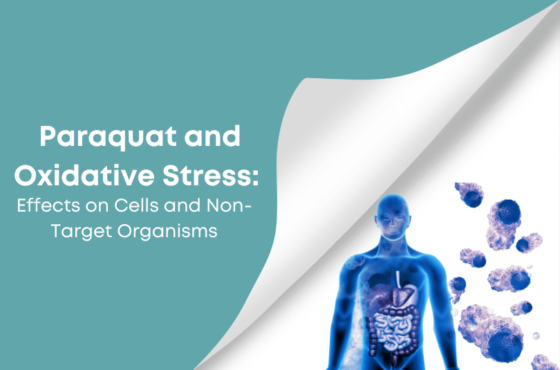Side effects of include mouth ulcers, increased heart rate, dehydration, excess fluid in the lungs, muscle weakness, low blood pressure, lung scarring, , and liver failure.
These can be experienced when is ingested, inhaled, or absorbed through the skin. to has short- and long-term health effects, including , lung scarring, seizures, , and Parkinson’s disease, to name a few.
In fact, people who have experienced side effects have taken legal action against its manufacturers by filing a .
What are ?
has short- and long-term effects. The side effects of are listed below.
Short-term side effects
- Confusion
- Dehydration
- Seizures
- Mouth ulcers
- Increased heart rate
- Excess fluid in the lungs
- Muscle pain and/or weakness
Long-term side effects
- Lung collapse
- Lung scarring
- Cell death
- Parkinson’s disease
Who is at risk for ?
Licensed applicators are most likely to be at risk for . This is due to being categorized as a restricted use pesticide (RUP). This means that the can only be mixed, loaded, and applied by certified licensed applicators who have undergone proper training from the U.S. (EPA).
But this does not mean that only a is vulnerable to the adverse effects of . Farmers, agricultural workers, and growers can also be at risk for . Moreover, studies suggest that to the within 500 meters of a home is associated with a 75% of Parkinson’s disease.
What are the of ?
can appear immediately or between a few hours to a few days. The of are listed below.
- Stomach pain
- Stomach cramping
- Bloody diarrhea
- Nausea
- Vomiting
- Dehydration
- Low blood pressure
- Coma
- Heart injury
- Scarring of the lungs
- that could result in death
- Death
If a patient survives , they are likely to experience its long-term health effects. These include lung scarring, heart problems, and a scarred esophagus that makes it hard to swallow.
It is worth noting, however, that patients who tend to survive the toxic effects of the are often younger and have ingested less amounts of . That said, people who have ingested large amounts have decreased chances of survival.
What is considered a dangerous level of ?
20-40 mg of ion per kilogram of body weight is a dangerous level of and is considered severe . Patients who are exposed to this amount of the chemical develop acute renal failure and lung injury that leads to .
However, the most severe and sudden can occur with to more than 40 mg of ion per kilogram of body weight. Ingesting this high dose of the can cause organs to fail very quickly, ultiamtely leading to death within hours or days following .
Mild is considered at less than 20 mg of ion per kilogram of body weight, which causes patients minor gastrointestinal side effects from which they can recover fully.
It is worth noting, however, that is so poisonous that the EPA declares one small sip can be fatal and there is no antidote that can save you.
Treatment
Treatment for involves eliminating the chemical from the body and preventing it from being absorbed into the bloodstream with the help of or Fuller’s earth. Both are used to remove from an individual’s system.
In a hospital setting, supportive care measures may also be provided, such as IV fluids, medications that make breathing easier and help elevate low blood pressure, ventilators to keep the lungs working, and dialysis for potential .
The use of supplemental oxygen is not recommended for individuals suffering from . Oxygen therapy can worsen the toxic effects of the chemical in the lung and therefore should be avoided.
In case of , it is recommended to remove the affected clothing and put them in a plastic bag. To avoid further dermal absorption, the person exposed should wash the affected area with soap and water.
Since is also possibe through skin damage, seeking immediate may also be beneficial.
On the other hand, if got into a person’s eyes, contact lenses should be removed. Then, the eyes should be rinsed with plain water for 10 to 15 minutes.
What is the outlook for ?
The outlook for will depend on several contributing factors, including:
- The amount of ingested
- The route of
- Patient’s overall health at the time of
- Time interval between and hospital arrival
- Amount of time between and the last meal
Studies suggest that the abovelisted factors are important determinants of lethality from .
Inhaling the can result in a disease called lung. This involves caused by breathing in the chemical. Over time, lung may cause permanent changes in a person’s breathing functions.
People With May Qualify for Compensation
If you or a loved one was exposed to and experienced major side effects, including lung scarring, , heart problems, or , among others, you may have a claim for compensation.
The majority of lawsuits filed against manufacturers involve the ability of the to cause an of Parkinson’s disease. However, victims who have similar stories of suffering from the side effects of may also recover money for their suffering.
In particular, you may recover compensation for damages such as current and future medical bills, lost wages, pain and suffering, and loss of quality of life.
lawsuits have already been filed across different states. Each state has a statute of limitations that limits the time frame in which a plaintiff can file a legal claim.
That said, anyone who has been negatively affected by should speak with an attorney as soon as they can. If you or a loved one has a potential case against manufacturers, do not hesitate to contact us today.
We will put you in contact with an experienced attorney who can help you assess your legal options free of charge.



